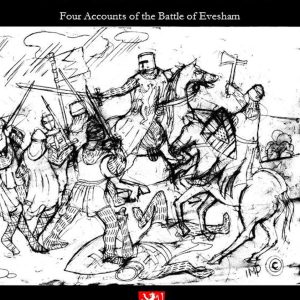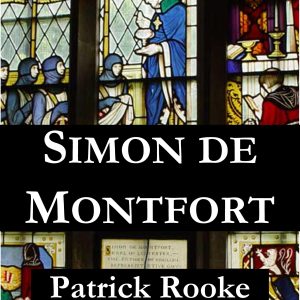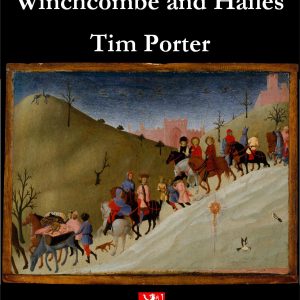William de Nangis’ account of the Battle of Evesham is an important source predating some of the other chronicler accounts. Although some sentences and the paragraph describing the death of Simon de Montfort have been translated, for example by John Nichols in his History and Antiquities of the County of Leicester, the whole passage has not previously been translated.
£5.50

Four translations of accounts of the Battle of Evesham of 1265 from Osney, Wykes Trivet and the Evesham Chronicle. All of them are important sources and extracts from them are quite often quoted or referred to by historians. Recently translated from the original Latin they will provide a sense of narrative and assist the reader’s understanding of the battle and the different viewpoints of the various chroniclers.

Simon de Montfort was a man in pursuit of an elusive dream, a figure of paradox even today. Medieval chroniclers say that he was handsome, intelligent, fair-minded and able, but his enemies found him arrogant, cold and driven by ambition alone. His faith led him to take up the Crusader’s cross and, even a century after his death, men venerated him as a saint. Yet he scandalised the pious by marrying a young widow sworn to a holy oath of chastity. He was a Frenchman who came to symbolise English nationalism. Landless and without influence he talked a king into granting him and earldom then led a rebellion against his benefactor. He was brutally outspoken, once telling the same king that he belonged in a mad-house, and totally uncompromising. He alienated his allies yet men would have followed him to Hell. In an age of fixed truth he was unafraid of change. His downfall was sudden, dramatic and tragic. Patrick Rooke has written an enlightening summary of a man who was adventurer, idealist and enigma, a man of his times in an age of conflict, betrayal, human frailty, broken dreams, imperishable hopes and enduring legends.

What happened to Simon de Montfort, leader of the Reformers, after his defeat at the Battle of Evesham? Was Earl Simon captured alive and later murdered? Does this explain the murder of Henry of Almain by Simon’s sons, Simon and Guy? Could such behaviour be reconciled with prevailing views on chivalry? The questions raised by the Templar’s account will be discussed for many years.

Pilgrimage is the most essential of medieval studies – that’s a conclusion which Tim Porter has drawn from years of reading, research and exploration. Religion, politics, economics, travel, industry, art, architecture – pilgrimage opens into all these fields, and many more! And it cuts across classes and genders like nothing else, because nobody could be denied the vocation, if it was held to be genuine. Scores of places had some kind of pilgrimage attached to them: but the Gloucestershire/Worcestershire region was especially rich, with a host of saints and shrines reflecting every aspect of the ethos. Hailes and Winchcombe in particular offer in a nutshell so much of what we need to know.

For many, Kilpeck church is the quintessential example of an English parish church. Its very appearance has been influenced through restoration by an antiquarian’s view on how the medieval church should look. In this building the efforts and agendas of successive generations of historians, archaeologists, art and architectural historians have all been brought together, answering some questions but constantly posing others and developing new ways of understanding the building in context, whether that be physical, social or cultural. Kilpeck remains something of a special place for scholar and visitor alike.

A new account of the death of Simon de Montfort at the Battle of Evesham, found on a fourteenth-century roll belonging to the College of Arms.
Privacy Policy | Cookie Policy & Settings I Copyright © 2023 The Simon de Montfort Society I Charity number: 1092319 I Website Design: Abbey Gate Media